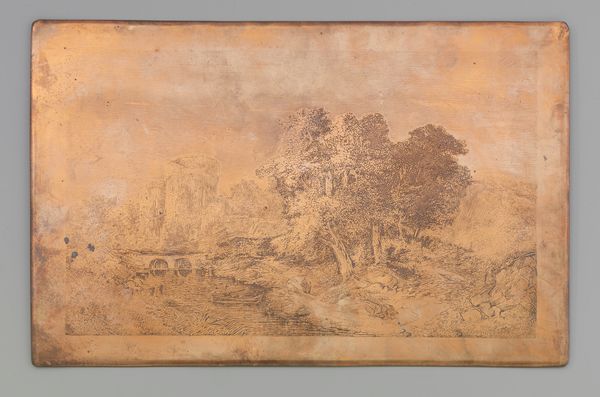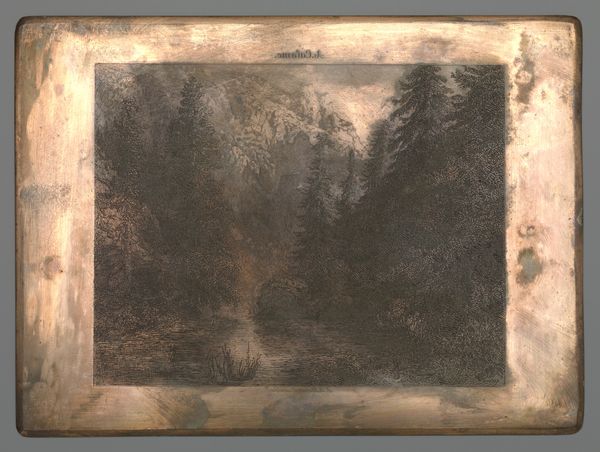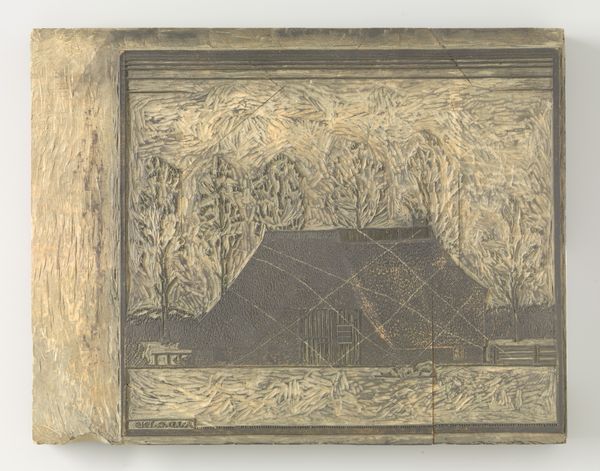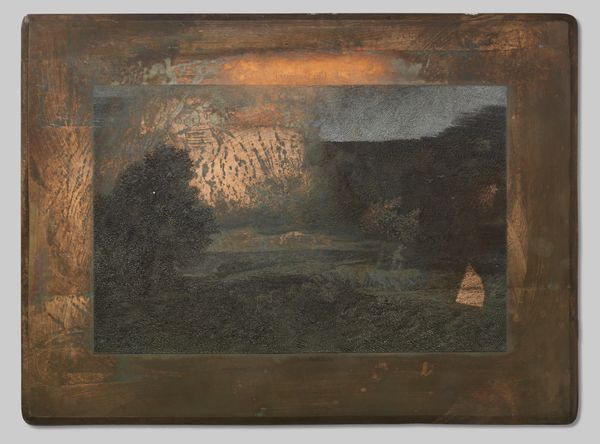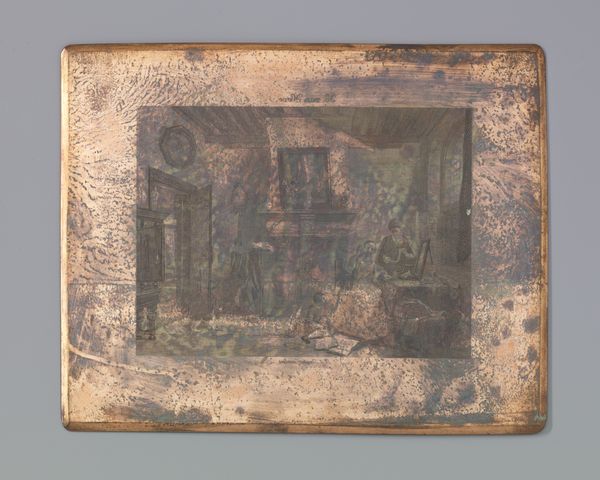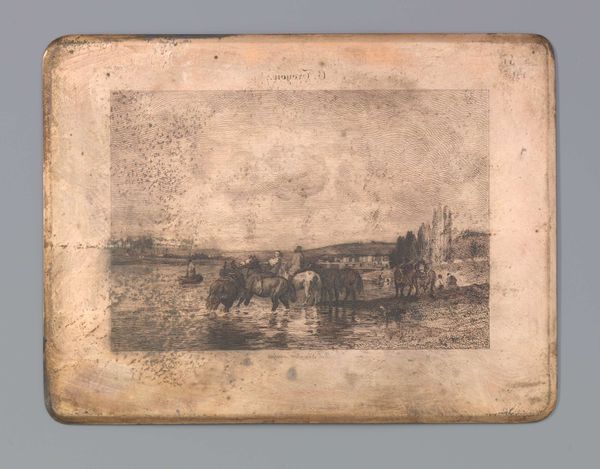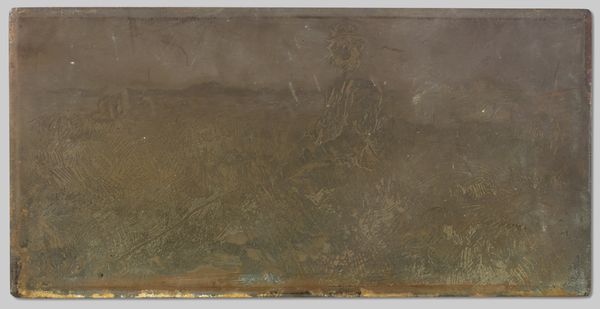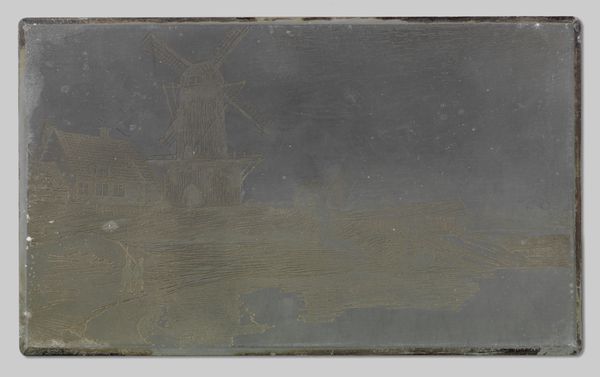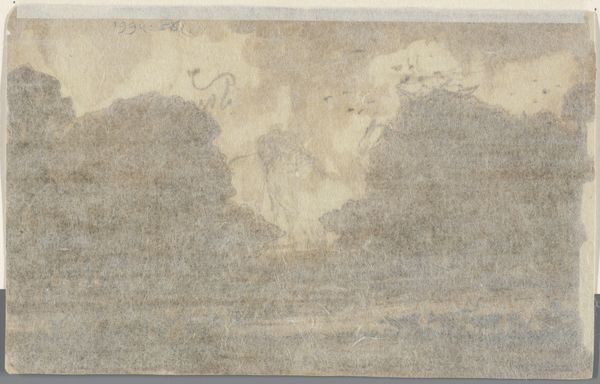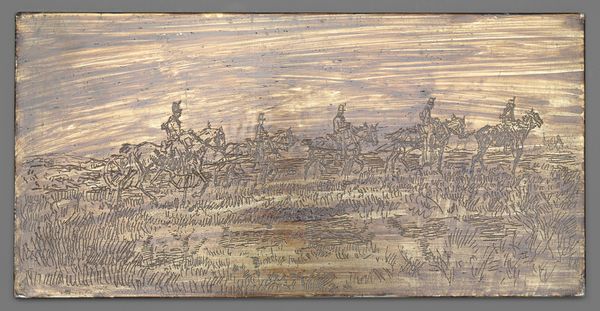
Dimensions: height 140 mm, width 201 mm
Copyright: Rijks Museum: Open Domain
Curator: At the Rijksmuseum, we have Dirk Jurriaan Sluyter's *Winterlandschap,* dating from 1821 to 1886. It's rendered primarily in watercolors. Editor: The copper plate immediately strikes me. It gives the watercolor an aged quality, like an artifact recovered from centuries past. You can almost smell the damp earth and frosty air. Curator: Yes, it possesses that feeling doesn't it? Sluyter worked in the Romantic style, imbuing landscapes with a sense of awe and perhaps even melancholy. Winter scenes often symbolize reflection or the passage of time. Editor: Right. But there's more than melancholy here. Look at the surface itself. The blotches and variations in the copper patina create an abstract border. They emphasize process: the artist's touch, the unpredictable nature of materials. There’s an undeniable tension there. The smooth application of the watercolor against the corrosive nature of the copper. Curator: Indeed, copper also holds potent associations. The alchemists linked it with Venus and emotions related to love. This adds a complex layer. Winter, conventionally linked to coldness, is depicted on a metal symbolic of warmth. Editor: Fascinating point! The human figures almost blend in, but note how small and stoic they are in contrast to the wide frozen landscape. Do they add to the sense of isolation, or rather persistence against the bleakness of winter? Curator: The image may represent a cultural memory of rural life at a very precise moment. These daily labors also appear heroic set against nature's grandeur, the very image evokes that sense of communal memory, or resilience against the elements. Editor: The fact that it is worked onto this aged looking copper really is perfect. It isn't simply representational; the medium embodies the artwork's emotional core. Curator: Quite so. These images speak to us beyond the surface, engaging cultural associations accumulated over vast periods. Editor: Exactly. This work becomes not just a picture, but a piece of social history recorded materially in earth-given colors and metal.
Comments
No comments
Be the first to comment and join the conversation on the ultimate creative platform.
